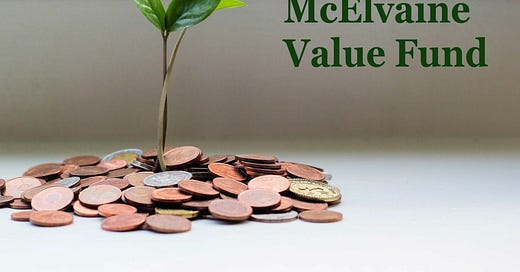You may recall last year I discussed investing and focusing on situations where you have a competitive advantage. If you are interested, I have saved last year’s report on our website (avaluefund.com
) under the “What we own and Why” section. This section also contains our webinars including a recording of our Feb2024 presentation.
In a tongue-in-cheek way, I often describe the market price of a stock as Mr. Spock plus/minus Homer Simpson. What I mean is the current share price is essentially its “true value” plus/minus the emotional state of the marginal owner. By marginal owner I simply mean the next person to buy or sell a share. For reference, I googled a listing of emotional states and suggest if you are a value investor, you may want to buy when the marginal seller is experiencing fear, disgust, sadness, contempt, indifference, or sadness. Conversely, for a value investor the best time to sell is when the buyer is optimistic and happy. In either of these extremes, the other party is not focused on price. That is the key.
Intrinsic value to me is not an exact figure but a range ideally supported on the downside and open ended on the upside. Determining this range need not be a complicated process and in fact, I find a relatively straightforward estimate of value is preferred. Some investors construct complex spreadsheet models. The danger here is while the output is precision-like, the inputs are very subjective.
As Fran Lebowitz said: “In real life, I assure you, there is no such thing as algebra”. In other words, business by its nature will be volatile. Any estimate of a company’s intrinsic value ought to take this into account. In value investing there is always a monster under the bed, and it seems to me, a complex model is too fragile a limb to stand on. With these models, a small change in assumptions will substantially change the output. For the investor, this may result in fear rather than confidence in the face of business volatility. This is like, as Dave Barry puts it, taking a sleeping pill and a laxative in the same night. The outcome is likely to be unwanted and unpleasant activity.
Ultimately, a company’s intrinsic value will be strongly influenced by the environment and the incentives. By environment, I mean the Company’s operating, financial, competitive and industry characteristics. These items govern volatility, velocity, and efficiency. On the other hand, insider incentives determine direction. Incentives include both financial and non-financial factors.
This is a poor analogy, but I will press forward with it. When our kids were little, they loved 5-pin bowling. Sometimes there were guardrails on the lanes to keep their (well, honestly my) balls out of the gutter. In many cases, bowling was somewhat of a hazardous outing as the bowling ball usually went forward but one needed to be prepared for the occasional backward throw or multi-lane voyage. This is like a business. Rarely do things progress in a straight line towards the goal. Incentives act as guardrails. When the unexpected happens, the guardrails (or incentives) push the business back on course.
As I wrap up this section, I will address our structure and incentives. As an investor, you have a lot of alternatives for your money. Some of these alternatives include funds with a lower fee and expense structure than our fund. Whether these funds are actively managed mutual funds, ETFs or index funds, I encourage you to also consider alignment. Who has “skin in the game” with you? With us, you are my partner. I think this implies a higher standard of care than say a ”client” and more importantly, recognizes we are in this together. If MVF does well, we both do well. If MVF does poorly, I can assure you no other investor suffers greater “financial pain” than us (Kate and me). Our interests are aligned.



